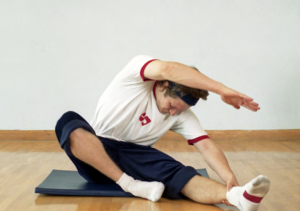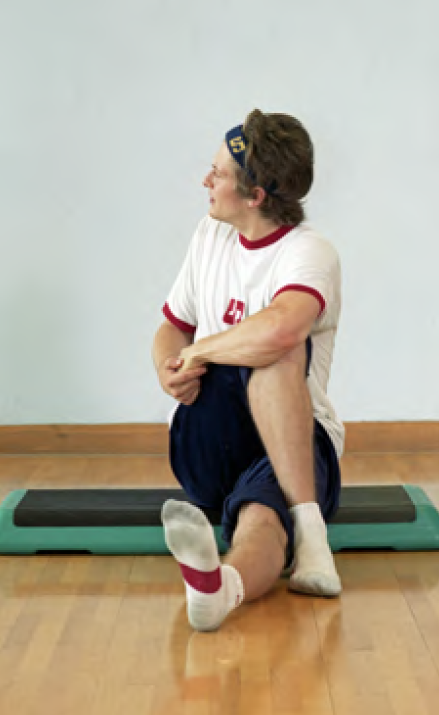By Peter Nicol

I tend to have a short attention span when it comes to my physical conditioning—focusing day-to-day and/or week-by-week with my preparation and recovery. I was not always this way; when I was a professional my regime was long-term, unwavering, and there was always plenty of time allocated to training. However, since I now spend my time focused on other work and family, my physical conditioning has suffered and, as a result, my body aches much more when I do play. This probably sounds familiar for so many of you out there, both junior and senior players. With a couple Legends events on the horizon, I began the journey back into training and reconnected with what works best for my sport and my body—yoga.
We have all heard about the benefits of yoga for both mind and body, but I cannot stress enough how much it helps me with squash-specific physical issues. My areas in need of strengthening, engaging, and stretching are no different to most squash players with my hips, lower and middle back, IT band and shoulders requiring the most work. Most forms of yoga will cover these areas in normal classes, but I’ve found a mix between a Flow class and Yin class to be the best forms of practice for me.
Flow is more challenging as you move from one pose to another with little break or rest, and the class can go for up to ninety minutes. This mimics a (very) long match perfectly with warm up at the start and then Savasana at the end—lying flat on the floor for 10 minutes! The flow classes I most enjoy work a lot on opening up my hips/lower back and, though very challenging (my hip area is tight like most squash players), the added strength and mobility I gain really helps my game.
Yin is a form of yoga that is all about allowing your body to release tension and tightness by holding long gentle stretching poses with supportive props. The first time I attended a Yin class, my expectations were that I was going to practically fall asleep as the room was warm, we used blankets and bolsters to help prop the body in certain positions but I got a shock. Some of the positions were incredibly uncomfortable, especially any focussing on the hip area.
However, after a few sessions the freedom of movement I started to feel was liberating. I also found that it was helpful mentally— the mental application required to stay in an uncomfortable pose, centering my attention on maintaining a deep, even breath is a true challenge and takes practice. The more practice, however, the greater success and this skill translates to my concentration abilities on-court when faced with physical challenges.
 I had not felt better physically in my adult life than when I was integrating two or three Yin/Flow yoga classes a week into my squash training routine, but somehow I managed to forget this over the past nine months. I’m now back to one or two classes a week due to time restraints and, although going through the difficult stage of my muscles and connective tissue opening up, I am already noticing a physical improvement on court and in recovery after playing.
I had not felt better physically in my adult life than when I was integrating two or three Yin/Flow yoga classes a week into my squash training routine, but somehow I managed to forget this over the past nine months. I’m now back to one or two classes a week due to time restraints and, although going through the difficult stage of my muscles and connective tissue opening up, I am already noticing a physical improvement on court and in recovery after playing.
I now run a year-round training program for elite juniors in New York and with Jessica, my partner (my original and on-going teacher), we are about to incorporate yoga into the training schedule of players due to noticeable physical issues evolving even in the youngest of our players. You can join me in one of Jessica’s squash specific yoga sessions on SquashSkills.com (free video).
I hope you are able to continue or begin to explore adding this type of training to your current schedule. If no additional time is available in your schedule, and you experience any aches and pains, I can’t recommend enough swapping one of your on-court sessions with a class for at least a month. Good luck!





